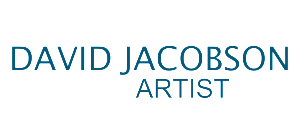Aruchab
2008
Mixed Media
David Jacobson: “This first piece, coincidentally is actually a piece very à propos of BAB, because it is a piece which contains reference to the death of my father and to Carl Schlettwein. The river is the “Aruchab”; and when I was crossing the Aruchab, I saw a snake that had not managed to cross the road successfully and that had been killed, had been run over. I’ve used the snake’s position in death as an indicator, an overlay on the map of the journey that I took. In other words, if you start with the tail of the snake, that is where Windhoek would be, and the snake follows the route round to where Swakopmund is. The shape is quite similar. There are three other images that reference both the landscape and humanity. One is a satellite image of Namibia. The other is an image of the human heart, and the third is Namibia and the human heart combined, superimposed onto each other, layered. It’s confusing because they look so very, very similar. At the bottom and in the centre is an envelope, which contains a photograph of the package with my fathers ashes, which were distributed in Cape Town and a photograph of Carl Schlettwein as the stamp on the letter. It includes the words “Your father was my doctor.”, the words that Carl Schlettwein used to introduce himself to me when we first met. My name is signed in Hebrew, and it says “David ben Nachman”. That would be my given name according to Hebrew tradition. David the son of Nachman, the son of Norman, my fathers name, whereas my Western name is “David Jacobson”. Things changed when they moved to Southern Africa. In the box frame hanging over the edge of the canvas there’s a stethoscope, part of my inheritance when my father died. My father was Mr Schlettwein’s doctor in Namibia at one point, and I am intrigued by the fact that the ears that listened through this stethoscope would be the same ears that listened to Carl Schlettwein’s heart. I think that is sufficient about this piece and it gives you a clue as to how we will look at all of the work. They all contain layers of meaning. They contain images of the present and of the past – and not only my past but also other people’s pasts with which I’m not very familiar or indeed know nothing at all. They also contain objects from my past or collected when I returned or by friends who have visited Namibia and brought things back to me.”
© David Jacobson



